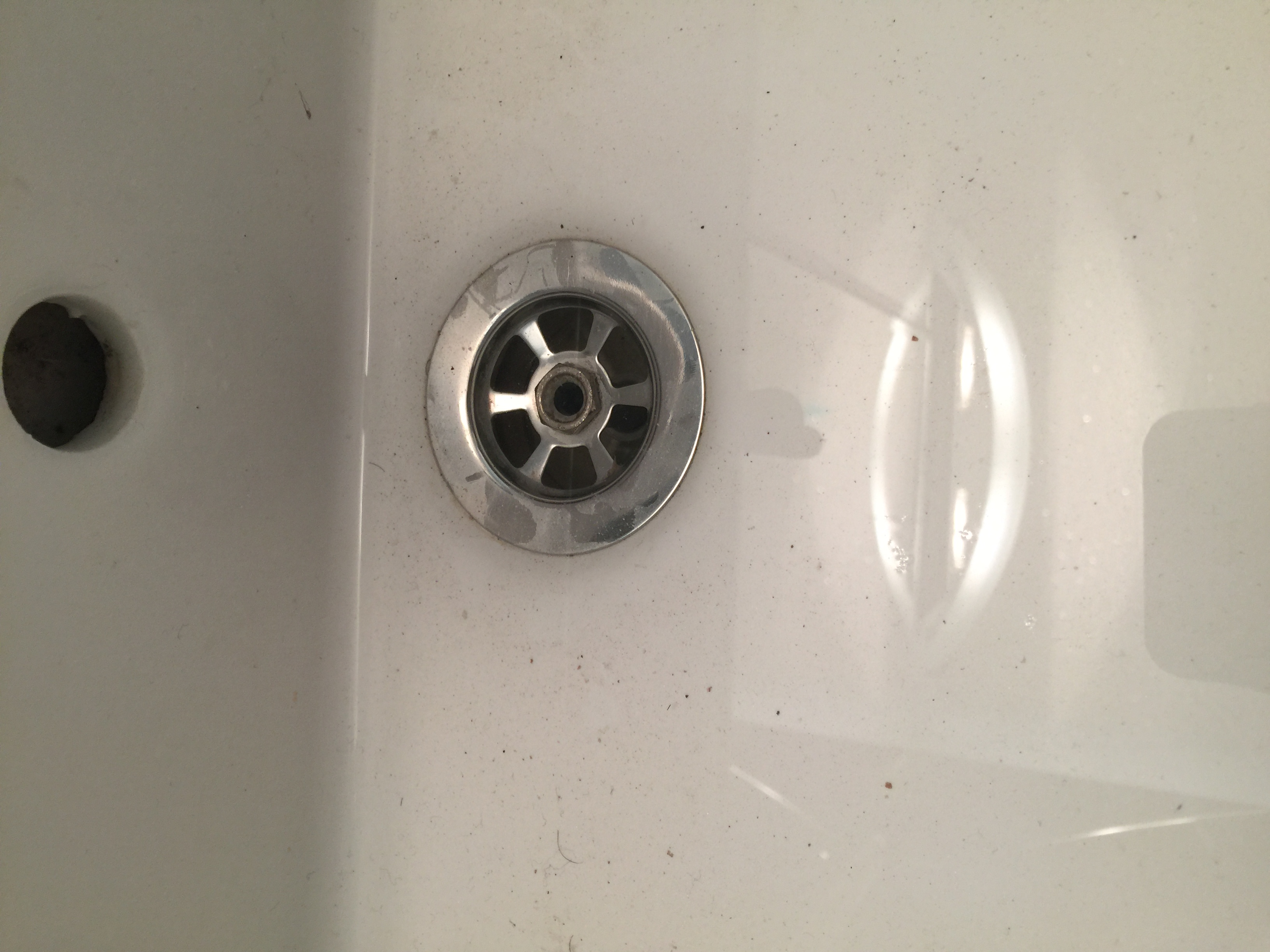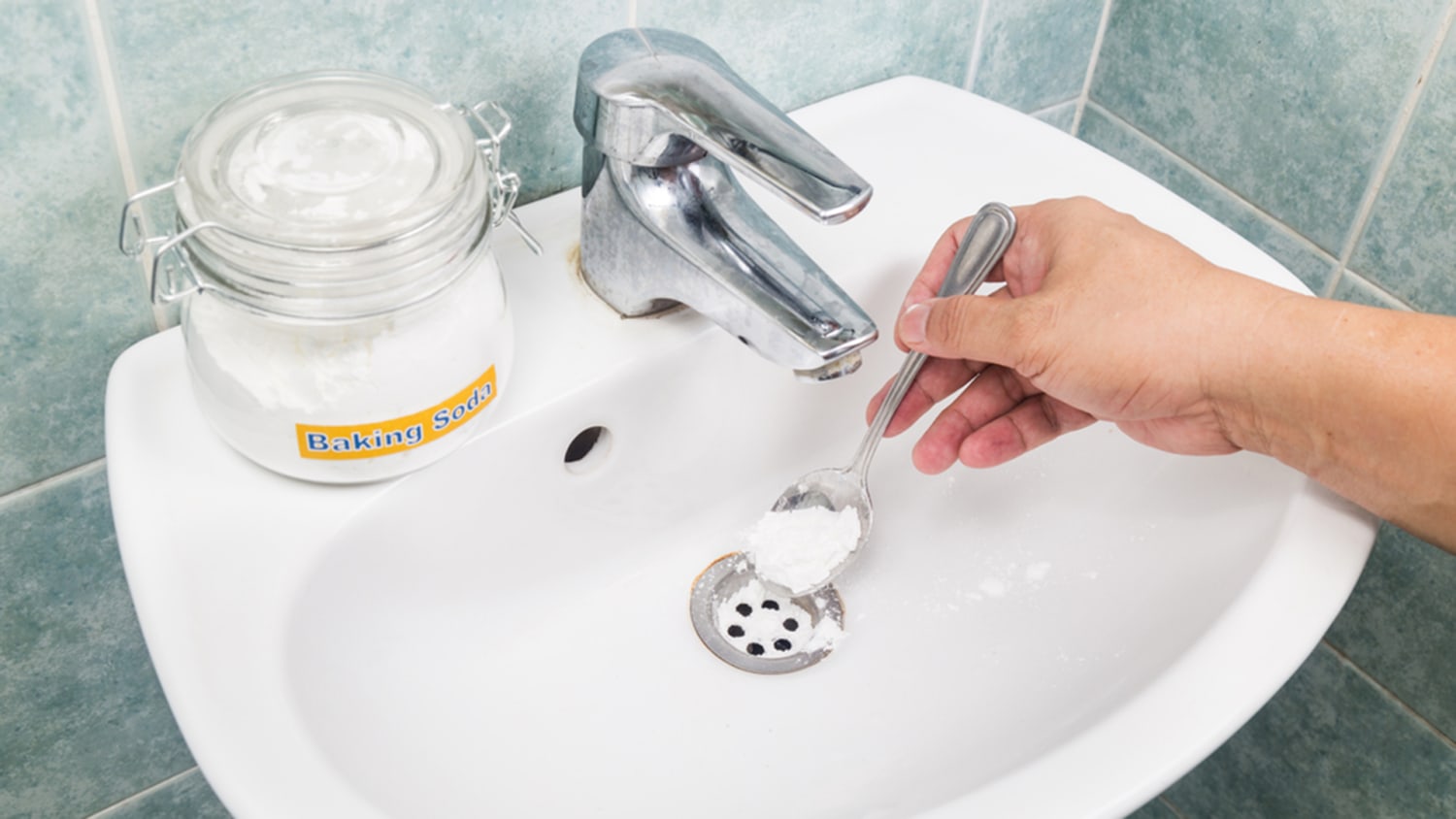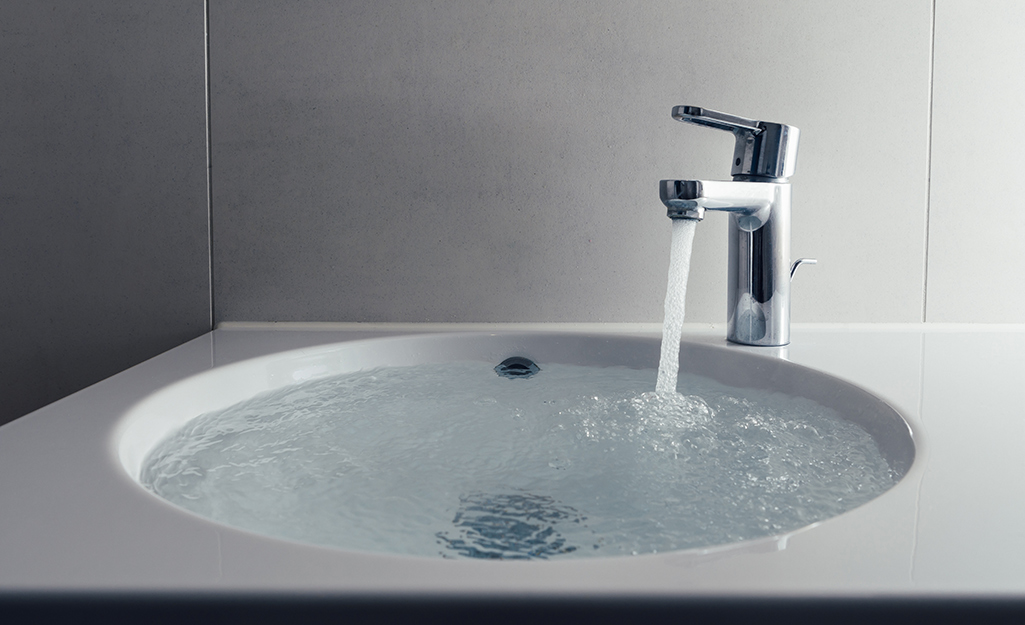Common Causes of Slow Bathroom Sink Drains
Let’s start this article by discussing the most common causes of why your bathroom sink drains slowly.
- Hair Buildup: One of the most common culprits behind slow bathroom sink drains is hair buildup. Over time, strands of hair can accumulate in the drainpipe, leading to blockages and restricted water flow. Regularly cleaning out the hair from the drain can help prevent this issue.
- Soap Scum and Mineral Deposits: Soap scum and mineral deposits can gradually accumulate in the drainpipe, causing it to become narrow and impeding water flow. This is particularly common in areas with hard water. Regularly cleaning the drain with a mixture of vinegar and baking soda can help dissolve these deposits.
- Foreign Objects: Sometimes, small objects like jewelry, toothpaste caps, or cotton swabs can accidentally find their way into the sink drain, leading to clogs. It is important to be cautious and avoid letting such items fall into the drain to prevent blockages.
- Pipe Damage or Misalignment: In some cases, slow bathroom sink drains can be caused by underlying pipe damage or misalignment. Cracks, leaks, or bent pipes can impede the flow of water, resulting in slow drainage. Professional plumbing inspection and repair may be necessary to address this issue.
- Grease and Food Waste: If you frequently wash dishes or pour cooking oil down the sink, grease and food waste can build up in the drainpipes over time, leading to blockages. It is essential to dispose of grease properly and avoid washing food waste down the sink to prevent slow drains.
How to Unclog a Slow Bathroom Sink Drain
Boiling Water: One of the simplest and most effective ways to unclog a slow bathroom sink drain is by pouring boiling water down the drain. This can help dissolve soap scum and other debris that may be causing the blockage.
Baking Soda and Vinegar: Create a natural drain cleaner by mixing equal parts baking soda and vinegar. Pour this mixture down the drain and let it sit for about 30 minutes before flushing with hot water. The chemical reaction between baking soda and vinegar can help break down clogs.
Plunger: Use a plunger specifically designed for sink drains to create suction and dislodge the blockage. Place the plunger over the drain, ensuring a tight seal, and vigorously plunge up and down for a few minutes. Repeat if necessary until the drain is clear.
Wire Hanger: Straighten a wire hanger and create a small hook at one end. Insert the hook into the drain and gently maneuver it around to catch any hair or debris. Pull out the clog, and then flush the drain with hot water to ensure complete removal.
Enzyme Drain Cleaner: Enzyme-based drain cleaners are effective at breaking down organic matter that may be causing the clog. Follow the instructions on the product and allow it to work for the recommended amount of time before flushing the drain with water.
Regular Maintenance in Preventing Slow Sink Drains
Regular Cleaning: Regularly cleaning the sink and drain can help prevent the buildup of soap scum, hair, and other debris that can lead to slow drains. Use a mild detergent and a brush to clean the sink and remove any visible buildup.
Hair Catchers: Install a hair catcher or strainer in the sink drain to catch loose hair before it goes down the drain. This can significantly reduce the chances of hair clogs and slow drainage.
Hot Water Flush: Once a week, pour a kettle of boiling water down the sink drain to help dissolve any potential blockages and keep the drain clear.
Monthly Maintenance: To keep your bathroom sink drain functioning optimally, consider performing a monthly maintenance routine. This can include using natural drain cleaners like baking soda and vinegar or enzyme-based cleaners to prevent the buildup of soap scum and other debris.
Professional Drain Cleaning: It is beneficial to schedule professional drain cleaning services at least once a year. Professionals have specialized tools and equipment to thoroughly clean the drain, removing any stubborn clogs and ensuring proper drainage.
Professional Solutions for Stubborn Slow Bathroom Sink Drains
Drain Snakes: A drain snake, also known as a drain auger, is a flexible tool that can be inserted into the drainpipe to break up and remove clogs. Rotate the snake while gently pushing it farther into the drain to dislodge the blockage.
Hydro Jetting: Hydro jetting is a professional drain cleaning method that uses high-pressure water to remove stubborn clogs and debris from the drainpipe. This method is particularly effective for clearing out grease, mineral deposits, and other hard-to-remove obstructions.
Video Inspection: In cases where the cause of the slow drain is not apparent, a professional plumber can perform a video inspection of the drain pipe. This involves inserting a small camera into the drain to identify any underlying issues, such as pipe damage or tree root intrusion.
Pipe Replacement or Repair: If the slow bathroom sink drain persists despite all efforts, it may be necessary to replace or repair the pipes. A professional plumber can assess the situation and determine the most appropriate course of action to restore proper drainage.
Chemical Drain Cleaners: Chemical drain cleaners should be used as a last resort, as they can be harsh on the pipes and harmful to the environment. If other methods have failed, consult a professional plumber before using chemical drain cleaners to ensure they are safe for your specific plumbing system.
Upgrading Your Bathroom Sink Drain
Install a Pop-up Drain: Consider upgrading to a pop-up drain with a built-in stopper mechanism. This type of drain allows you to easily control the water flow and prevent debris from entering the drainpipe.
Add a P-trap with Cleanout: A P-trap with a cleanout feature allows for easier maintenance and cleaning of the drainpipe. This curved pipe section traps debris and prevents foul odors from coming back up the drain.
Upgrade to a Wider Drainpipe: If you frequently experience slow drains, consider upgrading to a wider drainpipe. This can help improve water flow and reduce the chances of clogs.
Water Softener System: If you live in an area with hard water, installing a water softener system can help prevent the buildup of mineral deposits in the drainpipe. This can significantly reduce the occurrence of slow drains and improve overall functionality.
Seek Professional Assistance: When considering any upgrades or modifications to your bathroom sink drain, it is advisable to consult with a professional plumber. They can provide expert advice and ensure that the changes are made correctly and in compliance with plumbing codes.
Unclog a Bathroom Sink Without Chemicals (DIY) Family Handyman
Ways to Unclog a Slow Running Bathroom Sink Drain
Slow draining bathroom sink Terry Love Plumbing Advice
How to Unclog a Bathroom Sink
Ways to Unclog a Slow Running Bathroom Sink
Unclog Bathroom Sink – Quick and Easy Fix
Related Posts:










